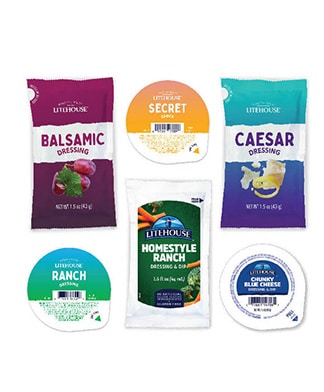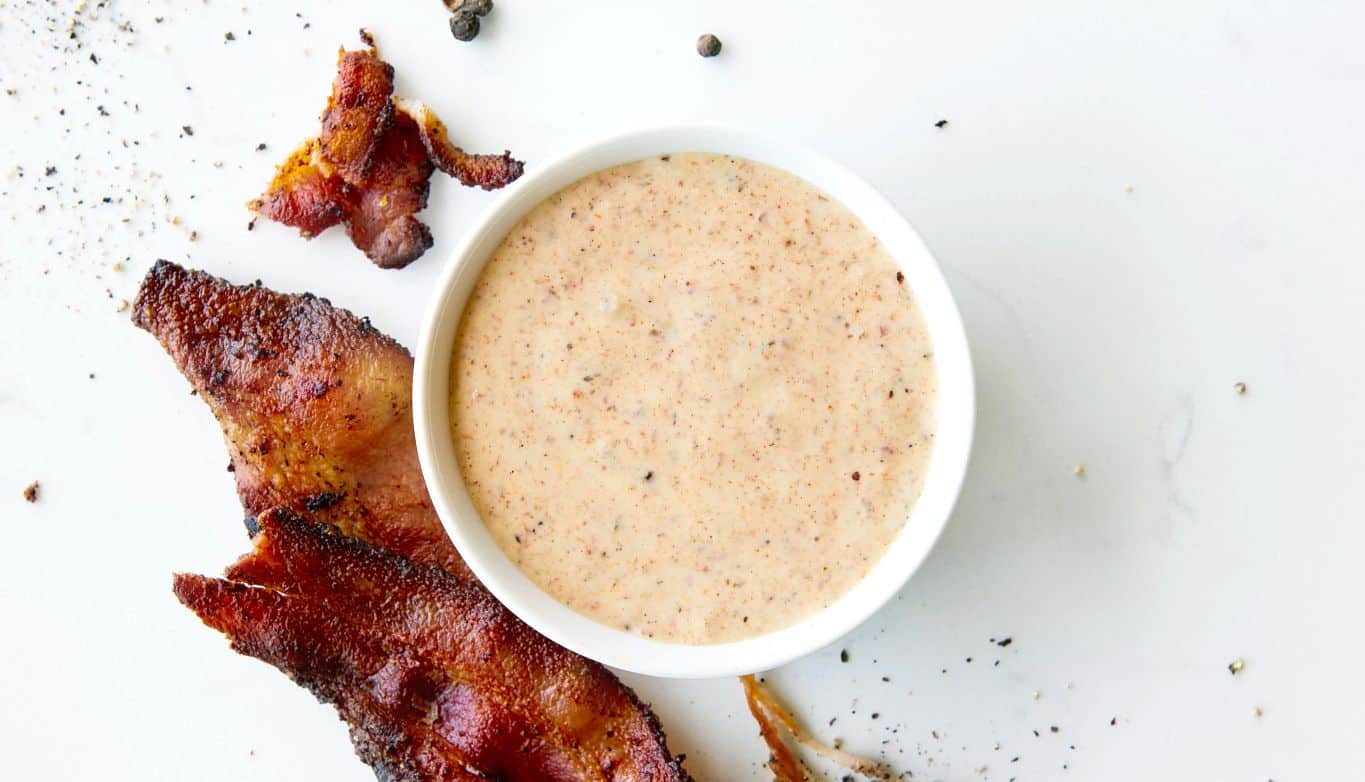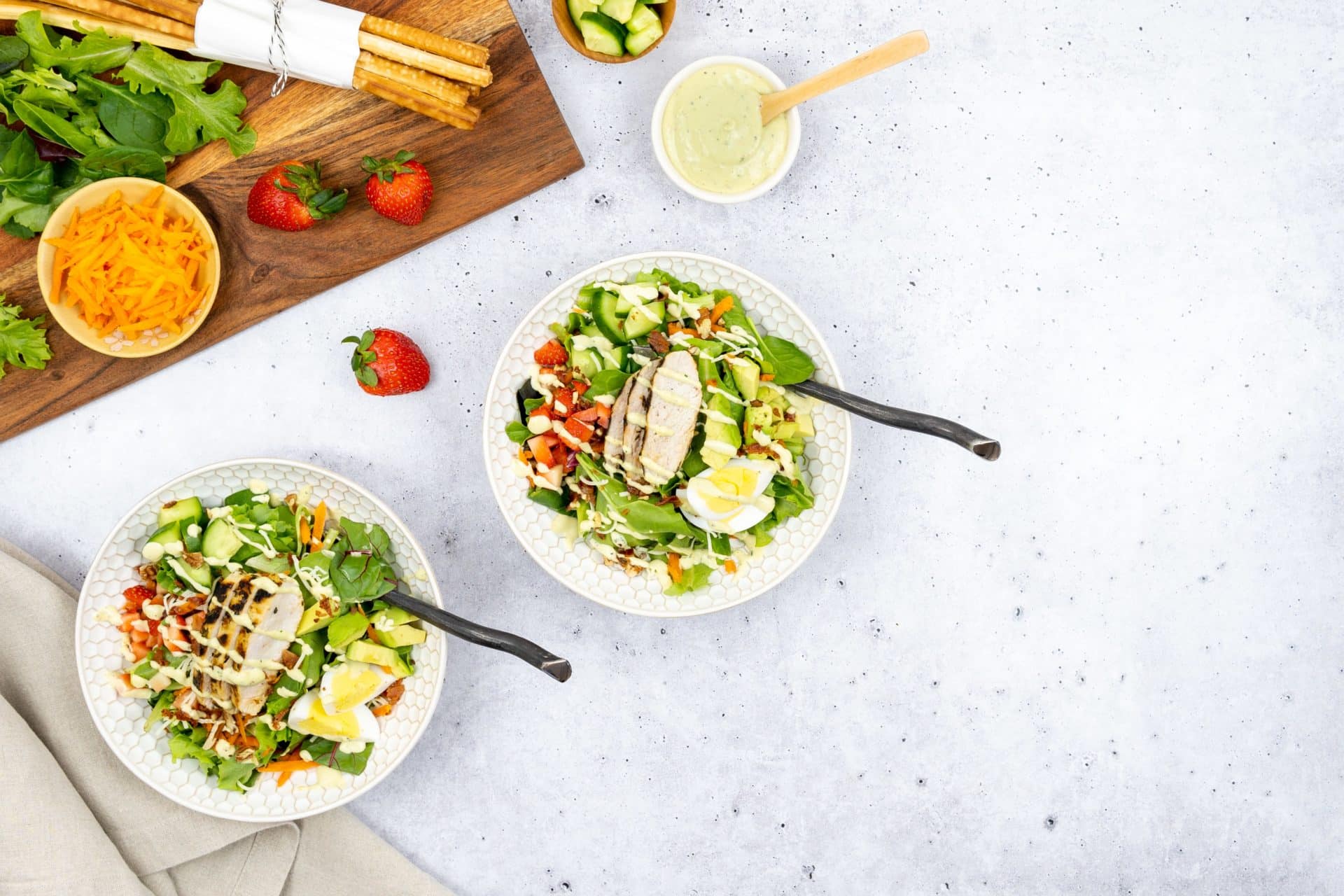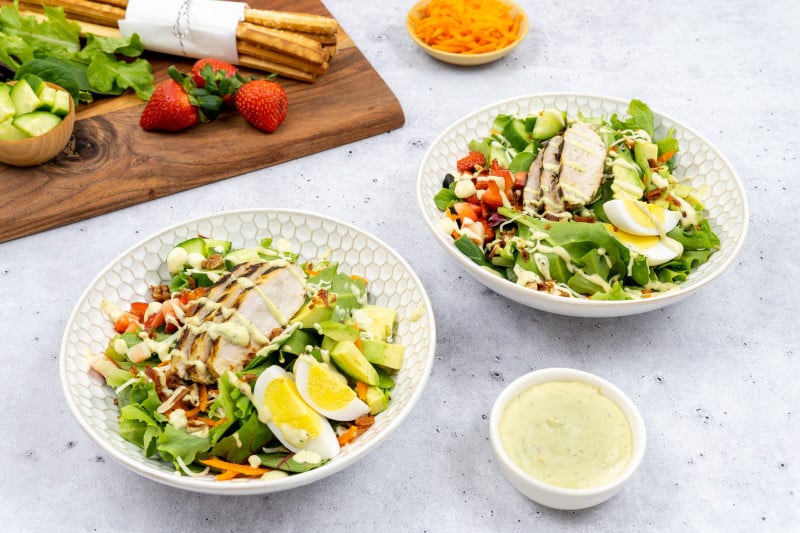Entree salads are a staple of the American restaurant experience. In fact, they are on 64.3% of menus. As patrons move toward healthier options in their menus overall, a great entree salad could be an excellent addition to your restaurant menu design. With just a few steps you can create an entree salad recipe for your restaurant that is more appealing to your specific target audience, wows your customers, and supersedes the competition. Download Now Total U.S. Entree Salad Guide for all the insights & menu ideas,
Developing an entree salad for your menu
In order to develop the ideal entree salad for your customer base, it is important to understand:
- The key ingredient components preferred by patrons
- How consumers are likely to eat their salad
- Calculation of raw food costs of preparing a salad and how to price for your market segment
- The most important aspects of the salad besides the ingredients
Our Study of Entree Salad Preferences
We surveyed 5000 U.S. respondents with a diverse mix of respondents of ages, household incomes, regions, gender, and family dynamics on their entree salad preferences.
- 77.4% of respondents dine in at restaurants once a month, several times per month, or once per week.
- 67.9% of respondents usually, always, or occasionally order entree salads when they go to a restaurant. This percentage includes people who habitually eat salad entrees as well as those who prefer entree salads over the other options.
Top Takeaways from Our Study
- Value, presentation, and portion
Respondents reported that portion size, value for money, and presentation are the most important attributes they look for in an entree salad.
- Dietary requirements
The least important attribute of an entree salad to the respondents surveyed was being sensitive to dietary requirements. This result, however, is likely because dietary requirements are less common amongst the general population. Therefore, it is not the priority of the majority of respondents. Although, you should always pay attention to dietary requirements. The increase of veganism in the past 5 years and the fact that salads are one of the few options available to vegans means that restaurants have a responsibility to offer adequate options.
- Seasonal vs Local and Organic
Local and organic produce were attributes that scored lower on the importance scale for entree salads. This somewhat contradicts the high preference for ‘In Season’ ingredients. The fact that seasonal ingredients are highly favored could be linked to the price and freshness aspect rather than the eco-friendly aspect.
- Key components
Respondents reported that the “lettuce type”, “fresh veggies” (that are not greens), and “dressing” are the most important and enticing aspects of a good entree salad. Getting these three things right is most likely to increase sales.
- Variety
Our respondents were most intrigued by the variety of fresh veggies and cheeses that could be offered in their entree salad. Overall, men were more adventurous with their choices than women.
Menu Development: Entree Salad Design
Deciding on lettuce and greens
- Around 80% of respondents considered lettuce and greens to be the most important factor of an entree salad. This is not surprising as this often makes up the bulk of the salad composition, taste and presentation.
- The top choices for lettuce and greens options among our respondents were romaine lettuce, spring mix/mixed greens and spinach greens.
- The least favored choice in this category was kale. Kale had the largest portion of people who had tried it and disliked it. We could speculate that the distinct flavor profile and texture of kale makes it a harder sell than neutral, fresher tasting romaine lettuce.
Including fresh vegetables
- The top three extra vegetables preferred by our surveyed respondents were tomatoes, cucumbers and carrots. Tomatoes and cucumbers were almost tied. Nearly 80% of respondents tried and liked, or tried and were indifferent about tomatoes and cucumbers.
- The most polarizing additions to an entree salad out of the top ten vegetables, were asparagus and yellow onion.
- Female respondents placed a larger importance factor on the extra vegetables than male respondents.
The properties of a good dressing
- Dressings were the third most important factor to consumers.
- The top three dressing varieties chosen were Ranch, Italian and Caesar. Women preferred ranch dressing (68.7%) and men preferred Italian dressing (62.7%).
- Avocado Cilantro dressing was the least recognized dressing variety out of the top ten. The results are also the most polarizing with some respondents intrigued by it and some certain that they would not enjoy it.
- Order our Entree Salad Sample Dressing Kit
Poultry wins for protein
- Chicken, hard boiled eggs and bacon were the three favorite protein additions for an entree salad. However, chicken was the clear winner with around 80% of respondents loving it or feeling neutral about it.
- Respondents were most curious about trying plant-based protein (24.3%), pulled pork (19%) and shredded beef (17.1%). The interest in plant-based protein could relate to the rise in veganism or the rise in more health-conscious decisions among the U.S. population in general.
Addition of classic cheeses
- S. respondents had a strong preference for classic European cheeses on their entree salad. The top 4 choices were Fresh Mozzarella, Cheddar, Mozzarella and Parmesan.
- Female and male respondents aligned very closely with their top four choices of cheese.
- Respondents were most curious about trying plant-based cheese (26.2%), Cotija (21.7%) and Gouda (18.2%).
Nuts and seeds highly favored as crunchy add-ons
- The response for crunchy add-on options were very mixed. However, croutons were the clear winners. Male (64.9%) and female (71.2%) respondents aligned closely with their preference of them.
- The second and third favorite crunchy add-ons overall were seeds and almonds respectively. These results were largely driven by the female respondents. Seeds yielded 64.8% preference in females and 55.3% preference in males. Almonds yielded 61.1% preference in females and 56.7% preference in males.
- Males overall preferred cashews (58.1%) and tortilla chips (57.4%) over seeds and almonds.
Americans are open to fresh fruit in entree salads
- Out of the top seven potential ingredient components of an entree salad, fresh fruit ranked the least in importance. That said, male respondents were more open to experimenting with fresh fruit add-ons than females.
- Avocado ranked second overall as the most appealing fresh fruit addition, though this was largely driven by female respondents. Avocado was the top choice for female respondents (67.7%) followed by strawberries (65.7%).
- Male respondents were more open to a wide variety of fresh fruit additions. Their top three were strawberries (62.1%), apples (58.3%) and avocado (57.4%).
Entree Salad Market Insights for Restaurant Menu Development
- The average main salad meal in U.S. restaurants costs $10. This average raises to $14.19 for midscale, contemporary casual dining, upscale casual dining and fine dining restaurants.
- Try these salads solutions that meet consumers’ demand:
- Fresh Strawberry Avocado Chicken Salad
- Freshly diced strawberries, diced cucumbers, avocado (sliced or diced), shredded carrots, hard-boiled eggs, crispy diced pancetta (or bacon), shredded Monterey jack cheese and pecans, served with grilled chicken on a bed of fresh mixed greens. Drizzled with a choice of our Litehouse® Homestyle Ranch or Avocado Cilantro Ranch
- Modern Chicken Caprese Salad
- A spin on an Italian classic – grilled chicken breast marinated and served on a bed of romaine. Topped with crispy pancetta, fresh mozzarella, dried cranberries, grape tomatoes and a slice of grilled ciabatta bread. Enjoyed with our Litehouse® Balsamic dressing.
- Buffalo Ranch Chicken Salad
- Garden spinach salad with spicy buffalo chicken and served with cooling Litehouse® Ranch Dressing.
- Fresh Strawberry Avocado Chicken Salad
The Perfect Entree Salad: Menu Opportunity Gap
By our analysis, there is an opportunity gap for entree salads that include the following components:
- Spring mix or romaine lettuce as a base.
- Cucumber, carrots and tomatoes are three consumer favorites. (Though tomatoes are highly favored, they appear in a large number of salads. Cucumbers and carrots are underrepresented.)
- Ranch, Italian or Caesar dressing
- Chicken for a universally loved salad. Bacon if targeting men. Hard boiled eggs if targeting women.
- Mozzarella is underutilized considering how highly favored it is with respondents. It only appears on 4.6% of entree salads. There is an opportunity here to present something different to the market.
We hope that this was a helpful resource in designing the perfect entree salad for your restaurant menu. We aim to bring you research-backed insights to help you with your menu development process. To get even more insights from our entree salad study and receive our recipe recommendations for enticing, well-presented and flavorful entree salads, you can explore our resources in the link below!






